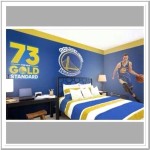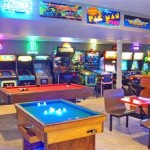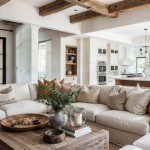Scary Haunted House Decorations: A Comprehensive Guide
Transforming a home into a terrifying haunted house requires meticulous planning and execution. Effective scary haunted house decorations rely on creating an atmosphere of dread and suspense, playing on common fears, and utilizing various elements to trigger visceral reactions in visitors. This article provides a detailed guide to achieving a truly terrifying haunted house experience.
Atmosphere is Key: Lighting, Sound, and Smell
The foundational element of any successful haunted house lies in creating the right atmosphere. Lighting, sound, and smell, when strategically implemented, can significantly amplify the impact of visual decorations and set the stage for a truly immersive and frightening experience. Dim, flickering lights such as strobe or colored lights can alter the perception of depth and shadow, creating an unsettling and disorienting effect. Green, red, and purple lights can enhance the macabre nature of scenes, while carefully placed spotlights can highlight specific props or characters to maximize their scariness.
Sound design is equally important. The strategic use of sound effects creates a sense of unease and anticipation. Sounds should be realistic enough to convince the visitor that something sinister is nearby. Utilize audio loops of creaking floors, distant screams, and rattling chains. White noise or static can also add to the feeling of disorientation, while sudden loud noises or musical stings can create jump scares. Ideally, the soundscape should be layered, with subtle ambient sounds that build tension alongside more overt, startling effects.
The often-overlooked element of smell can also significantly enhance the haunted house experience. Consider incorporating scents that evoke decay, must, or burning wood to create a visceral connection to the theme. Scent machines, diffusers, or even strategically placed bowls of potpourri can be used to introduce these scents into the environment, adding another layer of realism to the experience. A word of caution: avoid using strong or overpowering scents that could cause allergic reactions or discomfort.
Combining dim lighting, unsettling sound effects, and evocative smells creates a multi-sensory experience that primes visitors for fear and intensifies the impact of all visual decorations. Careful planning and execution in these areas will result in a more immersive and believable haunted house.
Effective Use of Props and Animatronics
Props and animatronics are crucial components for visual storytelling within a haunted house. The selection and placement of these items should be carefully considered to maximize their impact and contribute to the overall narrative. A simple, static prop can be surprisingly effective when positioned in a strategic location, while more complex animatronics can provide unexpected scares and create memorable moments.
Consider incorporating classic horror tropes, such as skeletons, cobwebs, and tombstones, to establish a familiar atmosphere. However, avoid relying solely on clichés. Adding unique or personalized elements, such as customized headstones with humorous or disturbing epitaphs, can add a layer of originality and intrigue. Be mindful of the scale of the props in relation to the space. Overcrowding an area can feel claustrophobic and detract from the overall effect, while a few well-placed, larger props can create a more impactful visual statement.
Animatronics, whether purchased or homemade, can be incredibly effective at creating jump scares and adding a dynamic element to the haunted house. Choose animatronics that are reliable and well-suited to their environment. Consider factors such as available space, power requirements, and durability. When using animatronics, pay close attention to their timing and placement. Position them in areas where they will be unexpected but not obstructive. Ensure that they are properly maintained and tested before each event to prevent malfunctions.
The use of props and animatronics should complement the overall theme and narrative of the haunted house. Consider how each item contributes to the story and how it interacts with the other elements in the environment. With careful planning and execution, props and animatronics can transform a simple room into a terrifying scene.
Creating Believable Characters and Costumes
Haunted house characters and costumes are essential for bringing the experience to life and delivering genuine scares. The effectiveness of a haunted house actor depends on a combination of costume design, makeup artistry, and performance skills. A well-executed character can elevate a simple prop or scene to a new level of terror, while a poorly executed one can break the immersion and reduce the overall impact.
Costumes should be appropriate for the character and the overall theme of the haunted house. They should be durable enough to withstand repeated use and movement, and they should allow the actor to move comfortably and effectively. Consider using layers to create a more realistic and detailed effect. Weathering and distressing techniques, such as adding dirt stains, tears, or blood splatter, can enhance the authenticity of the costume. Choose fabrics that are comfortable to wear and allow for adequate ventilation, especially in hot or humid environments.
Makeup artistry is crucial for transforming an actor into a believable horror character. Use high-quality, professional-grade makeup that is resistant to smudging and fading. Practice different makeup techniques, such as creating wounds, scars, and rotting flesh, to achieve the desired effect. Consider using prosthetics to add depth and dimension to the makeup. When applying makeup, pay close attention to detail. Small details, such as veining, discoloration, and texture, can significantly enhance the realism of the character.
The actor's performance is the final element in creating a believable horror character. Actors should be trained to stay in character at all times and to interact with visitors in a way that is both terrifying and engaging. Encourage actors to develop their own unique mannerisms and vocalizations to further personalize their characters. Provide actors with clear guidelines on how to interact with visitors safely and respectfully. Emphasize the importance of maintaining a safe distance and respecting personal boundaries.
By investing in high-quality costumes, professional-grade makeup, and thorough actor training, a haunted house can create characters that are truly terrifying and unforgettable.
Beyond these major points, achieving a truly terrifying haunted house depends on the details. The specific theme being used heavily influences prop selection and décor. If the theme is zombie infested, fake blood, torn limbs and rotting decorations would be appropriate. If the theme is a haunted asylum, straitjackets, padded cells and vintage medical equipment would create the scene. Another theme would be a haunted forest, in which you could include fog machines, hanging branches and eerie dolls strewn about.
Attention should also be paid to the safety of the guests. While the intent is to scare, the priority is to keep visitors from becoming injured. Any uneven floor should be marked or eliminated. Any sharp edges should be guarded or removed. If the haunted house is indoors, ensure fire codes are followed. There should be lighted emergency exits clearly marked. If the maze is outdoors, consider the terrain. Ensure level ground or clear warnings if the guests may encounter uneven ground. There should be attendants monitoring the safety of the guests during the experience.
The strategic use of mirrors can be quite effective. The maze is made scarier if a reflection is not expected. This causes a startle effect and disorientation. Another method is a seemingly endless hallway via mirrors. The guest may be trapped in a maze of reflections, not knowing which way is correct. There are plenty of effects that can be achieved via lighting, sound and mirrors.
Consider the ages of the guests and avoid themes that may be too sensitive for certain age groups. It should also be clear what age or medical conditions are not appropriate for the haunted house. If the goal is to create fun for all, certain restrictions may need to be in place. Ensure the employees are well trained and can spot someone who may need assistance. If a child is visibly upset, the attendant should ensure the child is safely escorted out of the maze.
These elements, when combined effectively, create an experience that is both terrifying and memorable. The key is attention to detail, creative use of resources, and a commitment to creating a believable and immersive world of horror.

Light Up Diy Haunted House Decoration Crafts

Y House Decorations Haunted S Scary Houses
:max_bytes(150000):strip_icc()/p2541533320-4-5b874f8f46e0fb0050f67419.jpg?strip=all)
23 Insanely Scary Diy Haunted House Ideas

14 Y Haunted House Ideas

25 Scary Diy Haunted House Ideas Budget Layouts

31 Scary Skeleton Skull Decorations Ideas Haunted House Haunt

Ways To Make Your Home Appear Truly Haunted For Oc Ghosts And Legends

10 Y Diy Props To Decorate Your House

33 Best Scary Decorations Ideas S

How To Decorate Your Haunted House For On A Budget Old Abandoned Houses Most Places







